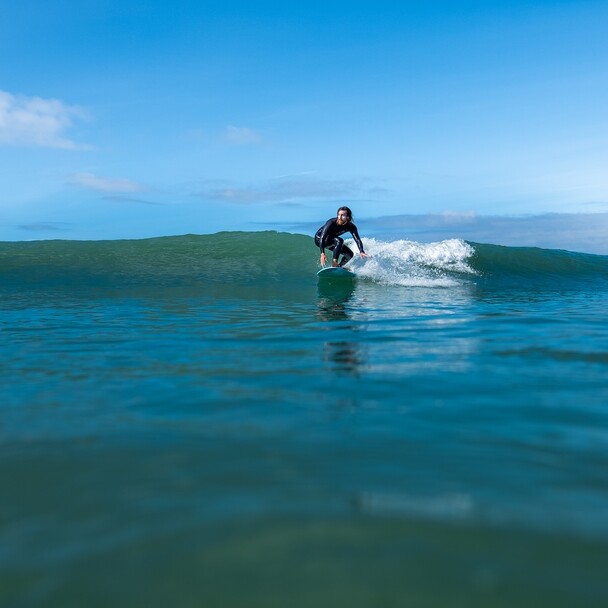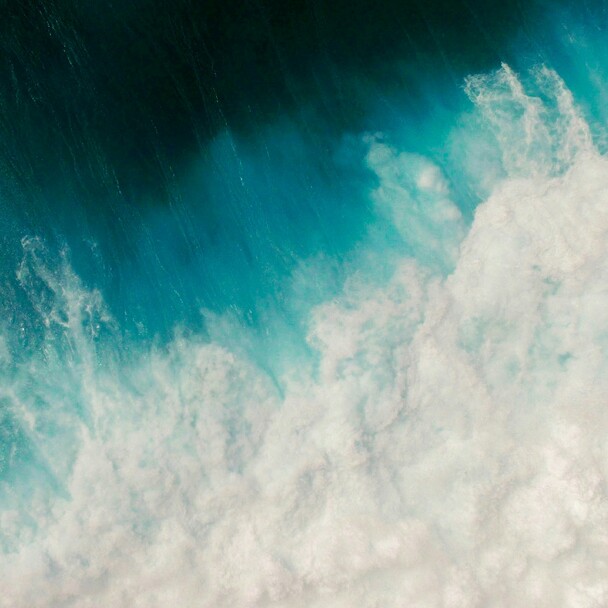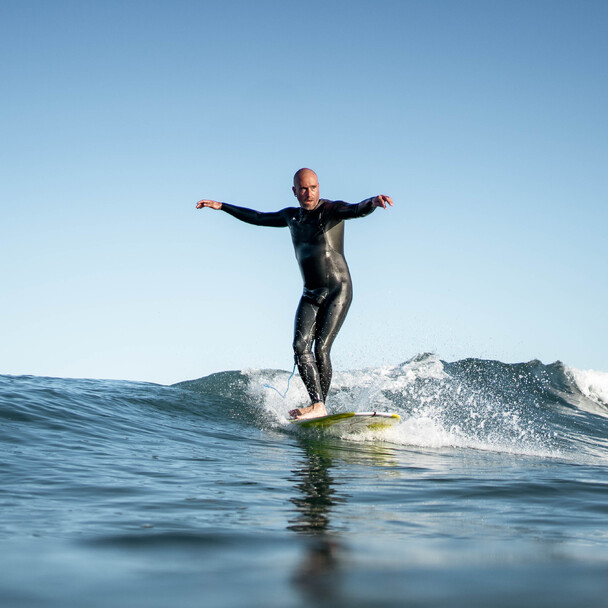How to read waves: A beginner's guide
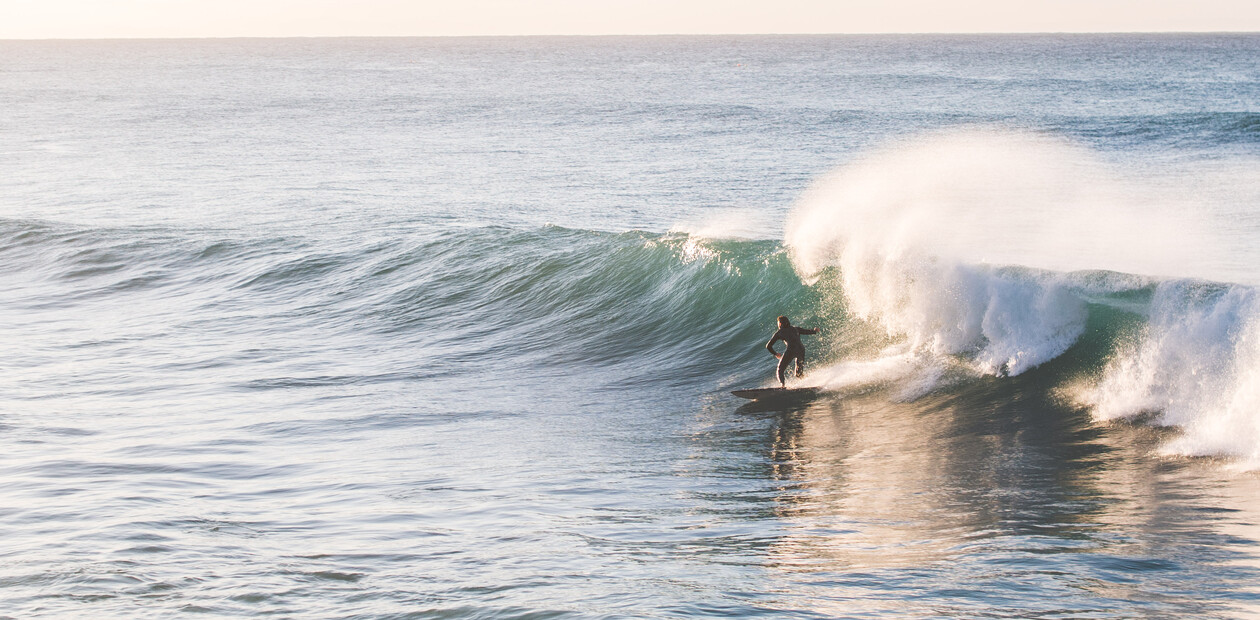
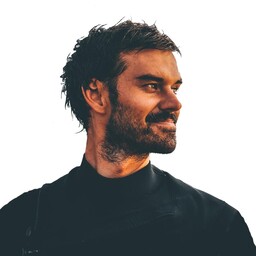
How you can read waves
At A-Frame Surf & Yoga in El Palmar, we show you how to read waves by observing how waves form, break and eventually carry you to shore.
Understanding surf spots, wave shape, wave fronts and swell direction is one of the most exciting parts of learning to surf. And El Palmar really is the perfect place in Europe for this!
With its sandy seabed and consistent Atlantic ocean waves, the local beaches are ideal for practising wave reading in safe and forgiving surfing conditions.
But before you really learn to read waves, it's best to start from scratch.
What makes a wave break
All waves that are suitable for surfing start far out in deep water, generated by the wind transferring energy to the ocean.
This wave energy travels until it hits shallow water, where the seabed slows down the lower part of the wave. The upper part of the wave moves faster, and that's when a breaking water wave is created.
When the power of the wave hits a sandy or rocky bottom, it transforms from a rolling swell into a surfable wave.
How and where a wave breaks depends on the tide, the direction of the swell, the type of surf spot, the depth of the water and other factors.
At A-Frame, our surf instructors show beginners how to recognise waves that form into gentle beach breaks, perfect for learning, as opposed to reef breaks or point breaks, which are more suitable for experienced surfers.
The three main types of surf breaks
Beach breaks
A beach break (like El Palmar) happens where waves break over sand. The sandy bottom shifts with tides and swells, creating constantly changing peaks. These surf breaks are ideal for beginner surfers because the breaking waves are softer and safer than on reefs or rocks.
Characteristics of beach breaks:
Waves break in different spots, offering variety
The sandy bottom makes wipeouts safer
Conditions change daily with the tide and sand movement
Reef breaks
A reef break forms over coral reefs or rock ledges. These waves can be powerful and predictable, but they break in shallower water over reefs that can be dangerous for beginners. Advanced surfers love them for their long, steep, surfable waves.
What to expect at a reef break:
Long, clean waves with consistent shape
Strong, fast waves with more power
Sharp rocks or coral require caution
Point breaks
A point break happens when a wave breaks along a coastline point or headland, usually over rocks or boulders. The wave’s shape is long and predictable, allowing surfers to generate speed and enjoy longer rides.
Key features of point breaks:
The wave peels along a single direction
Great for practicing longer rides and turns
Often preferred by experienced surfers
There's no right or wrong type of surf break. You should ride whatever you feel comfortable riding. Each surf spot has its personality. From mellow beach breaks to challenging reef breaks. Learning how waves form at each type of break helps you find the right place for your level.
How to read a wave before you paddle out
We'll give you in-depth coaching on how to identify a breaking wave, or "green" wave, before paddling out.
During this time you'll be instructed to take time to study the sea. Watch how swells approach, where waves peak and how other surfers position themselves.
Observe peak positioning
The highest point of a wave is called the peak. That’s where it starts to break. Look for A-frame waves, where the peak splits in opposite directions, giving both a left and right ride. These are ideal for learning to read waves and practice peak positioning.
Watch the sets
Waves come in sets. Usually, a few larger waves roll through. Then there's a lull of flat water that follows. Use that quiet time to paddle out safely without fighting the breaking waves. The average time between sets depends on the swell period. Longer periods mean long waves with more powerful swells, but that's getting into more advanced territory.
Understand tides and water depth
At low tide, the sea floor is closer to the surface, creating steeper, faster-breaking waves. High tides or higher tides make waves slower and softer because there’s more deep water cushioning the wave’s energy. Beginners love high tide because the conditions are more forgiving. But it really depends on the particular spot.
Read the wind
An offshore wind (from land to sea) holds up the wave’s face, making smooth, surfable waves. An onshore wind creates choppy surf conditions, which are trickier for beginners because the wave face is messy and therefore harder to ride.
Spot rips and channels
Fast-flowing water moving back out to sea creates rips or channels. These can help you paddle out through breaking waves, but they can also be dangerous. Our instructors also point out any potential hazards before we paddle out.
Understanding wave shape and direction
Once you can read waves, start noticing their shape and direction.
Lefts and rights: A right-hand wave breaks to the surfer’s right. A left breaks the opposite way
A-Frame: Named after their peak-shaped crest that splits in two opposite directions, A-Frame waves offer both left and right shoulders to ride. These are ideal for beginners because they provide clear options and help build balance and control
Closeouts: A wave breaking all at once across its length is called a closeout. Avoid these. They shut down the wave quickly and don’t offer a good ride
Standing waves: Found in rivers or artificial wave pools, a standing wave stays in one place while surfers ride the wave’s energy
Artificial wave pools: Machines generate surfable waves that imitate natural ocean conditions. They’re great for practice when far from the coast.
Even modern wave pools try to mimic natural surf breaks, but nothing beats the feeling of reading a real ocean wave rolling toward a beach or reef.
Learn more about our thoughts on artificial waves.
Practice, patience and staying focused
Wave reading is a lifelong skill that improves every time you surf.
Beginner surfers should stay focused on observing other surfers, noticing surf conditions and asking instructors questions about the right swell direction or tide level. In fact, ask as many questions as you want.
We love answering them.
Regardless, we'll guide you through the wave reading process. Watching how waves form, break and reform. Over time, your instincts sharpen and you’ll feel the rhythm of the sea. And that's when the magic happens!
Frequently asked questions
The three main types of surf breaks are beach breaks, reef breaks and point breaks. Each type depends on the seabed, the coastline and the shape of the water waves.
Watch for waves that break evenly and form a "shoulder" that runs off instead of closing out completely. Observe how the wave energy spreads across the surface of the water and where other surfers are successfully riding the crests.
If the seabed or shoreline is too straight, the water waves break all at once, which is called a closeout. Irregular or curved bottoms create waves that peel, making it easier for surfers to ride the water waves.
Artificial wave pools create standing waves or moving, surfable water waves with the help of machines. They are great for controlled surfing and lessons, but do not offer the variety of natural ocean waves or ocean swells.
This depends on the swells, the sets and the beach break. Most of the time, medium to low tides provide clean, surfable waves on the sandy seabed.
These surf spots offer longer wave rides, predictable wave shapes and evenly breaking wave fronts, allowing surfers to pick up speed and practice advanced maneuvers. They are also usually more powerful, which is ideal for experienced surfers, but more challenging for beginners.
At low tide, waves break in shallow water, which concentrates the wave energy on the water particles. At high tide, there is more water depth, which makes the water waves appear slower and softer.
Yes, standing waves exist in rivers or artificial wave pools. Surfers stay in one place while the water flows quickly beneath them.
Because it's a safe beach break with a sandy seabed, consistent swells and easy channels to paddle out. This means that surfers can reach the takeoff zone faster and ride the water waves more easily.
Want to become an expert wave reader?
Learning to read waves connects you with the nature of the ocean. Its rhythm, power and flow.
At A-Frame Surf & Yoga in El Palmar, our surf lessons blend ocean awareness with mindful focus so you can understand how waves form, where they break and how to ride them with confidence.
Ultimately, one week (or more) with us will turn you into a proficient wave reader.
You might not become an expert after a week, but you’ll leave El Palmar surfing better, reading the ocean more clearly and understanding how to spot surfable waves in different conditions.
So whether you’re catching your first beach break or refining your wave reading skills on longer rides, A-Frame’s sandy-bottom surf spot is the perfect classroom. Our experienced surf instructors will help you stay focused, read waves with confidence and enjoy every session in the water.
Join us at A-Frame Surf & Yoga and start your journey toward becoming the kind of surfer who can read the sea, not just ride it!
